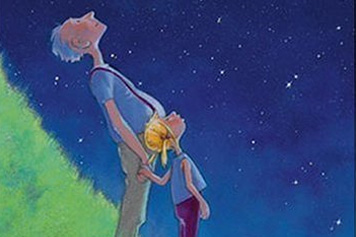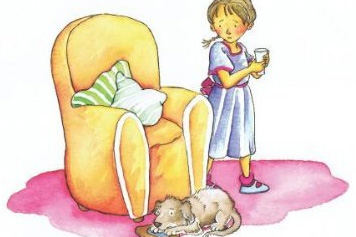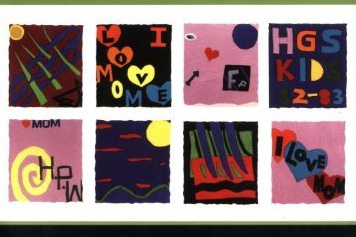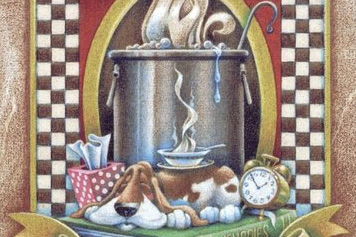Recommended Reading List of Books on Death, Dying and Bereavement For Children
Books on this list have been personally read and reviewed; each also appears on recommended reading lists of CHiPPS (Children’s Project on Palliative/Hospice Services of the National Hospice and Palliative Care Organization) and the American Academy of Pediatrics, Section on Pediatric Palliative Care.
Brief descriptions of each title are intended to provide guidance concerning topics and themes. I always recommend, however, that you examine a specific book for yourself to determine its strengths, weaknesses, and suitability for the children to whom you might offer it. Many parents and professionals find it helpful to read the book on their own before reading it with a child.
You can simply make these books available to children who can read on their own, but it is often better to read a particular book together with a child and then to follow up with a discussion of the issues it raises. One way to encourage discussions with older children is to ask them to examine picture books or simple stories in order to help you evaluate their value or suitability for use with younger readers.
-

And What Comes after a Thousand?
Lisa and elderly Otto spend their days rambling around his farm. Otto always seems to have an “emergency” cookie in his pocket, knows how to make a slingshot and loves to count the stars. When Otto dies, Olga tries to comfort Lisa by telling her “Otto is like numbers. He’s inside of us, and that will never end.”
-

Badger’s Parting Gifts
Badger’s friends are overwhelmed when he dies, but as time goes on they begin to treasure their warm and loving memories of when he was living with them.
-

Charlotte’s Web
The classic story about the friendship of Wilbur the pig and Charlotte the spider. Charlotte teaches Wilbur much, including that all life must end.
-

Children Also Grieve: Talking about Death and Healing
The combination of narrative and interactive memory book in the first part of the book is designed to be read and worked through by children. The story tells of the experiences of Henry, the dog of a family whose grandfather has died. As Henry experiences different feelings of grief, he learns strategies for coping. At various stages of the story, Goldman provides readers with the opportunity to share their own reactions to loss through words and pictures, using specific prompt questions that encourage the exploration of different facets of grief.
-

The Fall of Freddie the Leaf: A Story of Life for All Ages
This comforting story follows the life and death of a young leaf named Freddie. Freddie explores the meaning of life and the purpose of life even after death. A gentle and peaceful story.
-

Gentle Willow: A Story for Children About Dying
Using the metaphor of an ill tree who will not get well again and a caterpillar who transforms into a butterfly, this book helps children come to terms with their own death or that of a close friend, relative, or pet. This tender story addresses sadness, disbelief, anger, and most of all, the good medicine called love.
-

I’ll Always Love You
Elfie, a dachshund, and her special boy progress happily through life together. One morning Elfie does not wake up. The family grieves and buries her.
-

I Miss You: A First Look at Death
When a close friend or family member dies, it can be difficult for children to express their feelings. This book helps young children understand that death is a natural complement to life, and that grief and a sense of loss are normal feelings for them to have following a loved one’s death.
-

The Invisible String
Specifically written to address children’s fear of being apart from the ones they love, The Invisible String delivers a particularly compelling message in today’s uncertain times that though we may be separated from the ones we care for, whether through anger, or distance or even death, love is the unending connection that binds us all. “People who love each other are always connected by a very special String, made of love. Even though you can’t see it with your eyes, you can feel it deep in your heart, and know that you are always connected to the ones you love.”
-

No New Baby: For Siblings Who Have a Brother or Sister Die Before Birth
In this book, a young child tells about her reactions when the anticipated birth of a new sibling does not happen. Grandma discusses this experience with the child. She explains that no one is to blame and we do not always have answers. A picture book for preschool children.
-

Part of Me Died Too: Stories of Creative Survival Among Bereaved Children and Teenagers
Eleven true stories about young people who experienced the loss of family members or friends. The chapters progress from relatively simple deaths, such as the loss of a pet or the anticipated death of an aged grandparent, to more complex deaths, such as the loss of a sister and a mother to AIDS or the death of an abusive father.
-

Pearl’s Marigolds for Grandpa
When Pearl arrives home from school one day, her mother is waiting to tell her that Grandpa has died. Pearl discovers a way to keep her grandfather’s memory alive — by bringing life to marigolds, as he did every year. This book is built around the ritual of sitting shiva.
-

The Purple Balloon
This book observes that children who draw their feelings when they become aware of their impending death often draw a blue or purple balloon, released and floating free. Here balloon images first depict the death of an elderly person before turning to a dying youngster. The text says, “Good help makes leaving easier” and offers suggestions for those who want to make dying not so hard.
-

Since My Brother Died: Desde que Murio Mi Hermano by
With text in both English and Spanish, a child wonders if a brother’s death is only a dream or if anything could have been done to prevent his death. The child and his family are sad. Afraid of forgetting his brother, the child begins to paint – simple watercolor illustrations gradually turn into rainbows and the confidence that life can go forward.
-

Tear Soup: A Recipe for Healing After Loss
“An old and somewhat wise woman” called Grandy who has just suffered a big loss in her life, fills a soup pot over and over again with her tears and feelings, memories, and misgivings. Rejecting foolish advice, Tear Soup affirms all of the feelings and experiences that bereaved children and adults encounter, while encouraging them as they cope with loss and grief.
-

Thank You, Grandpa
On their walks in the woods over the years, a girl and her grandfather share many discoveries. When they find a dead grasshopper, the girl asks, “What can we do?’ Grandpa says: “We can say thank you and good-bye.” Years later, as the girl walks alone, she says to herself: “Thank you, Grandpa, for our walks. You kept me steady when I wasn’t so steady. You let me run ahead when I was ready to run ahead … but most of all, thank you for teaching me the words I need to say … Grandpa, I love you and I’ll miss you. But I will never forget you. Thank you and goodbye…”
-

What On Earth Do You Do When Someone Dies?
This book – simple, insightful, and straight from the heart—is for any child who has lost a loved one or other special person. The author talks directly to kids about what death means and how to cope. He asks the kinds of questions kids have about death—Why? How? What next? Is it my fault? What’s a funeral? — in basic, straightforward terms. He describes and discusses the overwhelming emotions involved in grieving—sadness, fear, anger, and guilt—and offers practical strategies for dealing with them. He also suggests meaningful ways to remember and honor the person who has died.
-

When Dinosaurs Die: A Guide to Understanding Death
The authors explain in simple language the feelings people may have regarding the death of a loved one and the ways to honor the memory of someone who has died.
-

When Someone Has a Very Serious Illness; Children Can Learn to Cope with Loss and Change
This book helps give adults the words to try to explain a very difficult concept to children who think concretely. It encourages communications so that children can speak of their feelings. A workbook to guide children through difficult emotional times and offers tools for coping with those changes.
-

Where’s Jess: For Children Who Have a Brother or Sister Die
Written by parents whose infant daughter Jess, died at the age of nine months, the book is intended to be used with young children to help them cope with the death of an infant sibling whom they knew. A few lines of text, with simple drawings on alternate pages, explore topics like what “death” means, remembering the dead child, and the value of tears. A picture book for prereaders.
-
When Something Terrible Happens: Children Learn to Cope with Grief
Creates ways for children to explore the fright, confusion and insecurity caused by traumatic events in their lives. The book gives children the opportunity to work through difficult life situations by providing education and emotional outlet in a format that allows them to use both art and language.
-
When Someone Very Special Dies: Children Can Learn to Cope with Grief
A practical format for allowing children to understand the concept of death and develop coping skills for life. The book involves children in drawing and coloring as a part of learning, and becoming comfortable with the concept of life events – birth to death. Exercises are simple and practical, giving children tools to express their feelings.
